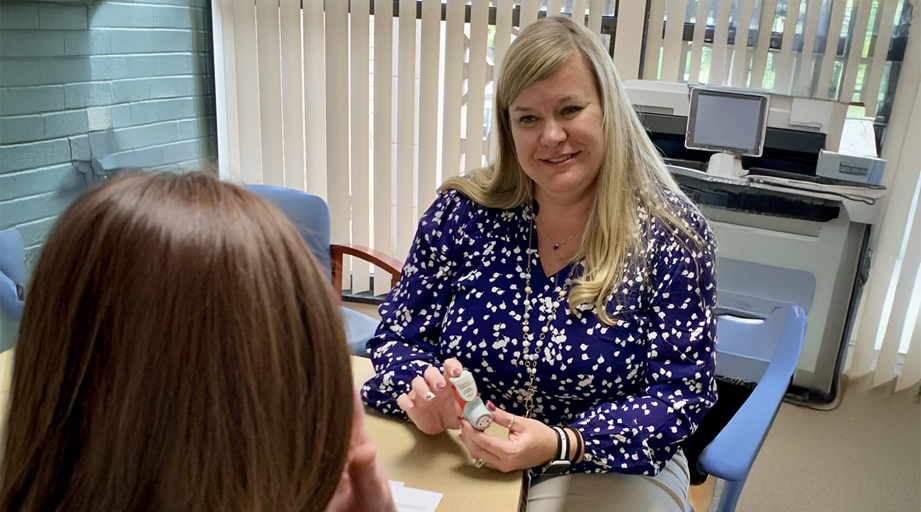
Children’s Hospital Colorado (CHCO) faced an all-too-common problem: not enough pharmacy technicians.
The health system, which serves seven states in the Rocky Mountain region, couldn’t afford to increase the pay to make these positions more enticing. Nor did CHCO have the internal resources to support a full pharmacy technician training program.
For that, they came up with a less-conventional solution: develop and sponsor a pharmacy technician apprenticeship, modeled after residency and internship programs. In One Small Step for Pharmacy Technicians, One Giant Leap for Recruitment: A Novel Use of Apprentice Programs, presented Dec. 6 at the Midyear Clinical Meeting & Exhibition, three CHCO leaders presented their case study and offered a practical template for how other health systems could solve their own pharmacy technician shortages.
Pharmacy technician recruitment is a hot topic across the country, shared Jennifer R. Hamner, director of pharmacy professional development. The reported turnover rate in 2021 was at least 20%, with one in 10 directors of pharmacy indicating they have lost 40% or more of their technicians.
The reasons are many. Health systems have been asked to do more with less. Regulatory requirements have increased. Then there’s the lingering impact of the COVID-19 pandemic, which led to unprecedented burnout and exhaustion for the healthcare workforce, plus layoffs — while also ushering in a new era of remote jobs that many people find attractive and fulfilling.
Meanwhile, pharmacy technician pay has flatlined while costs of living have increased, forcing many to leave the profession. One technician, on his way out the door, told Hamner he made more money driving for Uber.
“It’s no wonder we got here,” she said.
Pharmacy Technician Operations Supervisor Elizabeth B. McDermid then took the stage to describe the process CHCO followed when building and implementing its pharmacy technician apprenticeship program.
When researching the feasibility of an apprenticeship program, she recommended brushing up on state-specific requirements and engaging human resources representatives early on. You’ll need to create a thorough proposal with a timeline to get buy-in from internal and external stakeholders.
Finding the financial support to cover students’ pay, tuition, and other expenses turned out to be the most time-consuming part for CHCO. Government grants are a good place to start. “We are super-fortunate that Colorado had millions of dollars set aside to support training in healthcare,” noted Ashley M. Ramp, multisite director of pharmacy.
Then there’s identifying and nurturing the relationship with your external partner. CHCO supports the experiential portion of the pharmacy technician apprenticeship while the ASHP/ACCP-accredited pharmacy technician program at Front Range Community College (FRCC) handles the didactic portion. Programs must level-set on curriculum and mutual expectations to ensure the apprenticeship works for both sides.
This step may require compromise. For example, FRCC wanted students to get involved with hazardous nonsterile compounding early in their training. That didn’t align with how the hospital typically onboarded its employees. “We had to rethink how we were exposing these apprentices to those skills,” said Hamner.
The CHCO team also appreciated that FRCC shared its commitment to diversity, equity, and inclusion and to recruiting students from underserved communities. “This program really is helping our workforce reflect our patient population,” said Ramp. “It’s helping us to spread pharmacy to those who may not know about pharmacy as a [career] option.”
McDermid warned that it may be necessary to create a job description that doesn’t already exist in the health system — in CHCO’s case, a pharmacy technician associate — to fit within the boundaries of what nonlicensed apprentices are allowed to do at the facility and in the state.
And when it comes to recruiting talent, she suggested current employees may be the best resource. “Who wouldn’t want to work with their friends?” she posed.
Full-time employment at CHCO is contingent upon apprentices passing their pharmacy technician certification exam — and ideally, they join the pharmacy technician team to ease those workforce woes. But in the end, CHCO has the choice of whether to hire any individual. “It’s like a year-long interview,” said Hamner.
It took more than 12 months to bring the pharmacy technician apprenticeship program from concept to reality. McDermid encouraged pharmacy leaders to understand what the “rate-limiting step” might be in their organization and to give themselves enough time to work through those challenges. “Be flexible and patient — it’ll come together,” she said.
Now that CHCO’s pharmacy technician apprenticeship program is up and running, they’ve seen the mutual benefits. Students appreciate the new career opportunities, on-the-job training, and income security. The health system can staff open technician shifts and provide their licensed pharmacy technicians with mentorship and precepting opportunities — a valuable rarity. Each new cohort of apprentices offers a chance for continuous quality improvement within CHCO’s pharmacy operations, plus an influx of new ideas.
CHCO has learned a few lessons along the way. Apprentices require more intentional onboarding than licensed pharmacy technicians and pharmacists because they don’t come to the health system with the same experience. And it may be necessary to strategically message the long-term benefits of the program, lest employees view the apprentices as simply more work to manage.
In the second half of the session, speakers led attendees through an interactive SWOT (strengths, weaknesses, opportunities, threats) analysis exercise and a discussion of what it would take to establish an apprenticeship program at their sites.
McDermid described herself as a pharmacy technician born and raised in small-town Alaska. “Being able to present at a big national conference … and bring forth this idea and share it with you … means the world to me,” she told the audience.







